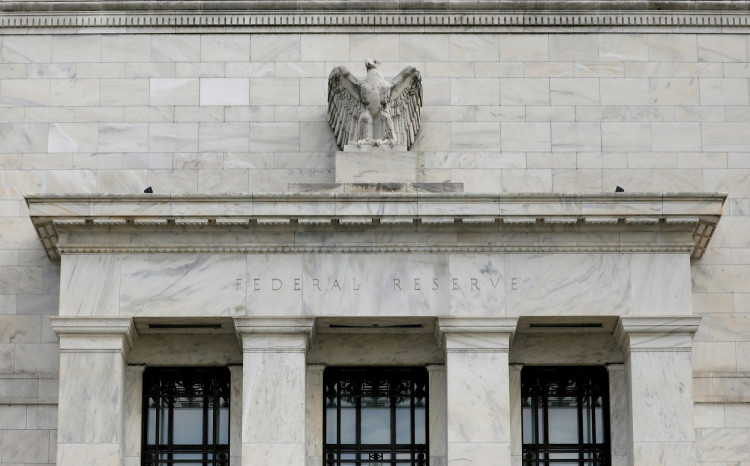This July, an interest rate hike by the U.S. Federal Reserve is highly anticipated, yet the debates on the circumstances for future increases continue.
Last Friday, Nick Timiraos, a reporter for The Wall Street Journal, wrote that the Federal Reserve is expected to increase interest rates by 25 basis points in July. The actual debates during this meeting may be focused on under what circumstances a further rate hike would be needed in September or later in the fall.
Timiraos observed that many Federal Reserve officials have shown their support for a 25-point rate hike during recent speeches and interviews. This increase would bring the federal funds rate to its highest level in 22 years. Although data released this week showed cooling inflation, officials remain motivated to raise rates in July. This motivation partly stems from stronger-than-expected hiring and economic activity since May. Moreover, some officials wish to see inflation continue to slow.
In his article, Timiraos further explained that an interest rate hike would decrease asset prices and increase borrowing costs, thus slowing economic growth through the financial market. Officials are concerned that if rates are not raised in July, as widely anticipated by investors, it could trigger a market surge, loosening financial conditions and making it more difficult to curb inflation.
This week, the U.S. released major data on the Consumer Price Index (CPI) and the Producer Price Index (PPI) for June, both of which showed a significant cooling of inflation. June's CPI rose by 3%, lower than expected, marking the lowest since March 2021. Core CPI rose 4.8%, also below expectations, and was the lowest since October 2021. June's PPI surprisingly cooled down to 0.1%, hitting a new low since August 2020, while the core PPI rose by 2.4%, below expectations, and was the lowest since February 2021.
The cooling inflation data, according to Timiraos, increases the possibility that the July rate hike might be the last in this cycle.
At the Federal Reserve's meeting in June, the anticipated interest rate increase was paused, but there were hints of two more potential hikes. Federal Reserve officials raised the median value of the interest rate peak expectation by 50 basis points to 5.6%. Dot plots showed two-thirds of Federal Reserve officials expecting the interest rate to be higher than 5.5% this year, which means at least two 25-point rate hikes. The Federal Reserve also more than doubled its GDP growth expectation for this year to 1%, lowered unemployment expectations for the next few years, and raised this year's core PCE inflation expectation.
Despite a few hawkish officials pushing for a rate hike in June, Chairman Jerome Powell secured unanimous support to hold rates steady at the June meeting. Part of this support was due to the strong suggestion that they may consider further hikes.
Powell previously noted that the decision to keep rates unchanged in June allowed officials more time to study the effects of the Federal Reserve's policies. They also wished to understand the economic impact of the increased bank financing costs after the collapse of three medium-sized banks earlier this year.
Powell also stated, "We have repeatedly seen inflation being more persistent and stronger than expected. At some point, the situation might change, and we need to be prepared to follow the data, remain patient, and let things evolve."
Within the Federal Reserve, a hawk-dove showdown is ongoing. Two Federal Reserve officials believed at the June meeting that there was no need for another rate hike this year. Raphael Bostic, President of the Atlanta Federal Reserve, previously stated that the Federal Reserve should wait for the policies to take effect. However, Timiraos predicts that hawkish officials may state at this month's meeting that the Federal Reserve should be prepared to raise interest rates again in September.
Hawkish officials within the Federal Reserve are concerned that if economic activity and hiring slow down insufficiently, further reduction of inflation could become more difficult. Timiraos referenced speeches by several hawkish Federal Reserve officials:
Federal Reserve Governor Christopher Waller expressed on Thursday evening that he hopes there is evidence that the recent slowdown in inflation is not accidental. He stated that he couldn't make decisions based solely on one data point. If inflation does not continue to drop and there are no significant signs of economic slowdown, he would support another rate hike in September. However, if data suggest that the Federal Reserve is making progress, and July and August CPI reports resemble that of June, it might indicate that rate hikes could be halted.
Lorie Logan, the Dallas Federal Reserve President with voting rights in the FOMC meetings this year, expressed deep concern about whether inflation could be reduced in a sustainable and timely manner. Logan admitted that despite her inclination towards a rate hike, she voted for a pause in June because officials released overall communication indicating a strong need for further rate hikes. At this moment, it's crucial for the Federal Reserve to follow through on the signals sent at the June meeting.
Cleveland Federal Reserve President Loretta Mester stated this week, "From what I've heard from my area's business contacts, if you think you need to raise interest rates, then do it."
Timiraos also wrote that officials who believe the effects of the Federal Reserve's rate hikes have not yet fully materialized are more likely to wait until November or December to decide whether to proceed with further rate hikes after the July meeting. If economic activity slows further at that time, officials might decide not to increase rates further and enter a new phase of tightening measures, maintaining stable interest rates amid slowing inflation. This would result in a rise in the actual interest rates adjusted for inflation.






